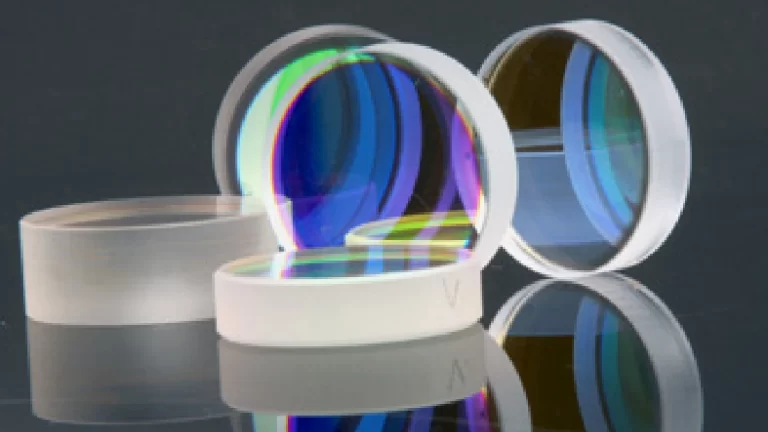What Are The Different Types Of Optical Diffusers?
In the world of optics, diffusers play a pivotal role in manipulating light to create stunning visual effects and enhance various imaging and illumination applications. Optical diffusers are ingenious devices that scatter light uniformly, reducing glare, hotspots, and harsh reflections. They find application in diverse industries such as photography, cinematography, lighting design, display technology, and more. In this blog, we’ll take a journey into the fascinating world of optical diffusers, exploring their different types and their significance in shaping the way we perceive light.
1. Ground Glass Diffusers:
One of the earliest and simplest forms of diffusers is the ground glass diffuser. Consisting of a sheet of glass with a roughened surface, this diffuser scatters light as it passes through, creating a soft and even illumination. Ground glass diffusers have historically been used in early cameras, projectors, and studio lighting setups. However, they have limitations in terms of light transmission efficiency and uniformity.
2. Opal Diffusers:
Opal diffusers are translucent materials with a homogeneous composition that efficiently diffuses light. They are commonly made from polymers, acrylics, or specialized optical-grade materials. Opal diffusers are highly popular in LED lighting applications, where they help in achieving uniform light distribution and reducing the glare from individual light sources.
3. Holographic Diffusers:
Holographic diffusers are intricate optical elements that use diffraction patterns to scatter light. They are designed using sophisticated holographic recording techniques, allowing them to create specific light patterns with unparalleled precision. Holographic diffusers find applications in areas like holographic displays, laser beam shaping, and imaging systems.
4. Frosted Glass Diffusers:
Frosted glass diffusers feature a surface that has been chemically or mechanically treated to scatter light. These diffusers are often used in decorative lighting fixtures and architectural applications, as they produce a soft, elegant glow and can be customized to achieve various levels of diffusion.
5. Micro Lens Arrays:
Micro lens arrays are composed of tiny lenslets arranged in a regular pattern. Each lenslet refracts incident light in a controlled manner, leading to diffused light output. These diffusers are commonly used in backlighting units for liquid crystal displays (LCDs) and other display technologies, where they ensure even illumination across the screen.
6. Lenticular Diffusers:
Lenticular diffusers consist of an array of cylindrical lenslets that efficiently redirect light. They are often used in LED signage and displays to widen the viewing angle and ensure that the displayed content is visible from various perspectives. Lenticular diffusers are also employed in automotive lighting to achieve smooth and uniform illumination.
7. Prismatic Diffusers:
Prismatic diffusers feature an array of prisms or grooves on their surface, which serve to refract and scatter incoming light. These diffusers are used in various lighting applications to control the direction of light and reduce glare, making them ideal for office lighting, retail displays, and other commercial settings.
Conclusion:
Optical diffusers are marvels of light manipulation, offering a diverse range of functionalities across numerous industries. From the humble ground glass diffuser to the precision-engineered holographic diffusers, each type serves a unique purpose in shaping the way we interact with light. As technology continues to evolve, so will the field of optical diffusers, contributing to increasingly immersive visual experiences and more efficient lighting solutions. As we move forward, it’s essential to appreciate the brilliance of these devices that enable us to harness the magic of light.
Related Readings:
FAQs – Different Types of Optical Diffusers
1. What are optical diffusers?
Optical diffusers are devices that scatter or disperse light, reducing its intensity and changing its direction.
2. What types of optical diffusers are there?
Common types include frosted diffusers, holographic diffusers, microlens arrays, and prismatic diffusers.
3. How do frosted diffusers work?
Frosted diffusers have a rough surface that scatters light in various directions, creating a soft and even illumination.
4. What are holographic diffusers?
Holographic diffusers use patterns to spread light uniformly, making them useful for display backlighting and light shaping.
5. What is a microlens array diffuser?
Microlens arrays consist of tiny lenses that redirect light, often used in imaging systems and beam homogenization.
6. How do prismatic diffusers function?
Prismatic diffusers have structured surfaces that refract light, producing controlled distribution and reduced glare.
7. What applications do these diffusers have?
They’re used in lighting, displays, imaging, and photography for enhanced uniformity, reduced hotspots, and glare prevention.
8. Can I customize optical diffusers for specific needs?
Yes, diffusers can be tailored for wavelength range, diffusion angle, and material properties to suit various applications.
9. Are there other specialized diffuser types?
Yes, there are diffusers designed for specific tasks, like diffraction gratings for spectral manipulation.
10. How do I choose the right diffuser type?
Consider factors like desired light distribution, application requirements, and spectral characteristics for optimal selection.








